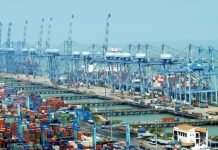Earlier in November, central banks in Indonesia and the Philippines kept interest rates at record lows to support the countries slow recovery from the pandemic.
Southeast Asia’s largest economy, Indonesia, grew by a disappointing 3.51% in the third quarter as restrictions to control COVID-19 cases weighed on activity. The picture is similar across the region.
In Thailand, a study from the chamber of commerce said lingering concerns about new waves of coronavirus are likely to keep weighing on spending and delay a return to pre-pandemic levels until the second half of next year. The vaccine rollout is of course also crucial with just half of Thailand’s 72 million population has been vaccinated.
On the markets, the Thai SET Index has gained 13.91% so far this year which makes it far from the worst performer among emerging markets but analysts say that unless tourists, who normally contribute about 12% of Thailand’s GDP, come back soon, the economy will struggle to recover. Meanwhile in Indonesia, the Jakarta SE Composite Index is up 11% this year.
But are there opportunities in these markets?
Southeast Asia had a different recovery from that of Europe and the United States. The difference between the regions is quite fascinating as other emerging markets such as those in Latin America or emerging Europe have been forced to hike rates quite dramatically in some cases because of pressure on the inflation side.
However, the story with emerging markets in Asia is different. In these economies, there’s very little inflation pressure, in part because they provide subsidies for food and fuel and also there’s a lot of slack in the economy as the region was particularly hit hard by the pandemic last year.
In addition, the central banks in the region have much more credibility. Therefore, they have an easier time in making sure the inflation expectations are under control. Bottom line, central banks in Southeast Asia are not rushing to hike interest rates anytime soon and low interest rates should help with the recovery into the next year.
Additionally, currencies play a very important role for the region as well. Weaker currencies actually can help with the exports from the region. When we talk about currencies, we would need to look at the external accounts and those external accounts in the region are actually in a good shape but with differences.
When you look at the oil exporters, they are benefiting from high oil prices. But when you look at Thailand however, which imports oil, there’s a double hit not just from oil but also from tourism which has fallen a lot given the pandemic.
When we look at the outlook in the region, it is safe to say that country like Indonesia, at the one end of the spectrum are in relatively better shape on the macro common front. Others however, like Thailand, given the oil and tourist situation have been lagging behind.
In Singapore, growth prospects are looking more constructive for 2022 now that the travel lanes have opened and the domestic restrictions are being eased back. Singapore is one economy in the region where throughout 2021, has remained resilient.
Meanwhile in Malaysia, Finance Minister Tengku Datuk Seri Zafrul Abdul Aziz recently told CNBC that Malaysia is on track to achieve the targeted gross domestic product (GDP) growth of 3% to 4% this year despite the emergence of the Omicron variant.
For now though analysts are predicting that although the new Covid variant may lead to disruptions, the region is unlikely to see the “blanket lockdowns” it saw earlier in the pandemic in places like Malaysia, the Philippines and Thailand hence improving its economic outlook.














